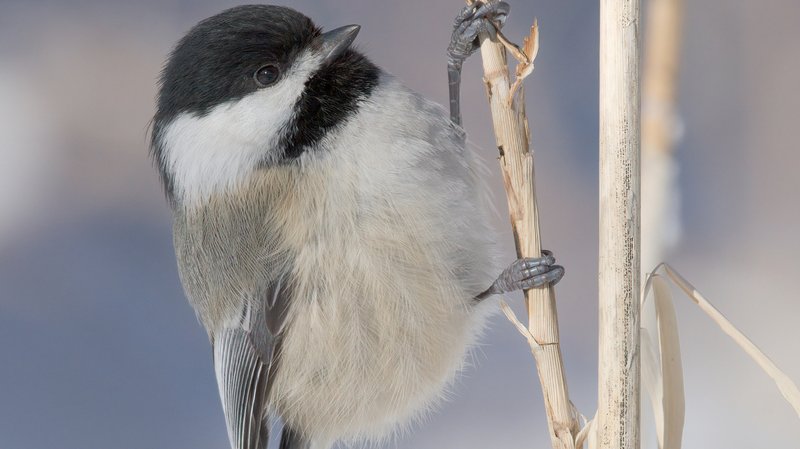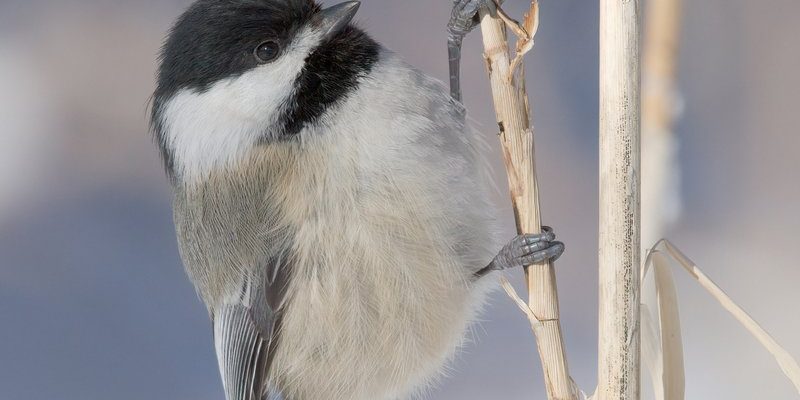
When you think of delightful sounds in nature, the chirping of the chickadee might just come to mind. These enchanting little birds, belonging to the family Paridae, are known for their lively personality and distinctive calls. With their playful behavior and curious nature, they’re often seen flitting from branch to branch, bringing joy to bird watchers and nature enthusiasts alike. You might be wondering what makes these birds so special and why they capture our hearts so easily.
Imagine strolling through a peaceful forest, when suddenly, you hear a series of soft, melodious “chick-a-dee-dee-dee” calls. It’s a song that seems to sing directly to you, inviting you to pause and appreciate the beauty around you. Chickadees are more than just pretty songs; they embody a variety of fascinating traits, from their social structures to their clever survival tactics. Let’s dive into the world of chickadees and discover what makes them truly remarkable.
Overview of Chickadee Species
Chickadees belong to several species, mainly the Black-capped Chickadee, Carolina Chickadee, and Mountain Chickadee, among others. Each species varies slightly in appearance, habitat, and behavior, but they all share certain characteristics that make them unique. For instance, the Black-capped Chickadee, with its striking black cap and white cheeks, is commonly found across North America. Meanwhile, the Carolina Chickadee’s range is more southern, sporting a similar yet slightly altered appearance.
Here’s a fun fact: chickadees are named after their distinctive call. The “chick-a-dee-dee-dee” sound not only identifies them but also serves as a warning signal. The number of “dee” notes can indicate the level of threat from predators, making it a critical part of their communication. So, when you hear that call, you’re not just hearing a bird; you’re experiencing a whole language of avian interaction.
Physical Characteristics
Chickadees are small birds, typically measuring about 4.5 to 5.5 inches in length. They have a compact build and a short, stubby tail. Their plumage is mostly gray with a white underside, highlighted by a black crown and bib. The Carolina Chickadee, for example, features a slightly softer gray tone compared to the sharper contrasts of its Black-capped cousin. Their size and coloration help them blend into the forests where they reside, making it easier to evade predators.
Another noteworthy feature is their large, dark eyes, which give them excellent vision. This keen eyesight is vital for spotting food and potential dangers in their surroundings. Their strong legs and feet enable them to perch on various branches and even hang upside down, showcasing their acrobatic skills while foraging for insects or seeds.
Habitat and Distribution
Chickadees thrive in diverse environments, from dense forests to suburban backyards. They prefer areas with plenty of trees and shrubs, where they can find food and nesting sites. Depending on the species, chickadees can be found in regions ranging from Canada to the southern United States. The Black-capped Chickadee enjoys a wide range, while the Carolina Chickadee is more prevalent in the southeastern parts of the country.
What’s fascinating is how adaptable these birds are. In urban settings, they often frequent bird feeders, becoming accustomed to human presence. This adaptability not only makes them a joy to watch but also allows them to thrive in changing environments. They often form small flocks, using collective vigilance to forage and protect against threats, which enhances their chances of survival in various conditions.
Diet and Feeding Habits
Chickadees are primarily insectivores, feasting on a diet rich in insects, larvae, and seeds. They are also known to consume berries and nuts, especially in the winter months when insects are less available. Their foraging behavior is quite entertaining; they can be seen pecking at tree bark for insects or dangling upside down to reach their favorite seeds. This unique feeding style allows them to access food sources that might be overlooked by other birds.
During the colder months, chickadees store food by hiding seeds in crevices or under leaves. They have remarkable spatial memory, allowing them to remember where they’ve stashed their treats, which is crucial for surviving harsh winters. If you’ve ever seen a chickadee at a bird feeder, you might have noticed how they can take a seed, fly away, and return within moments—often repeating this behavior numerous times. It’s a testament to their resourcefulness and adaptability.
Social Behavior and Communication
Chickadees are social creatures, often forming flocks during the non-breeding season. This social structure helps them find food and stay safe from predators. Communication is key in these groups, and chickadees use a variety of vocalizations to convey messages. Their calls can indicate everything from alarm to feeding opportunities, creating a complex social network.
You might be surprised to learn that chickadees have a hierarchy within their flocks. Dominant individuals often get access to food first, while subordinates wait their turn. Yet, in times of abundance, they may share food, showcasing their cooperative nature. Watching them interact can be a delightful experience; you’ll see them engage in playful chases and social preening, strengthening their bonds with one another.
Nesting and Reproduction
Nesting typically occurs in tree cavities or sometimes in artificial birdhouses. Chickadees prefer to excavate their nests in rotting wood, often using moss and feathers for insulation. The female generally lays between 5 to 8 eggs, which she incubates for about 12 days. Once hatched, both parents work tirelessly to feed the chicks, providing them with a diet rich in protein to ensure healthy growth.
Interestingly, chickadees exhibit a remarkable level of parental care. The male often stands guard while the female tends to the young, alert for any signs of danger. After about two weeks, the fledglings are ready to leave the nest, usually following their parents and learning essential survival skills. This nurturing behavior illustrates the bond between parents and offspring and deepens the fascination we have for these little birds.
Conservation Status
Fortunately, chickadees are not currently considered threatened or endangered. Their adaptable nature and ability to thrive in urban environments contribute to their stable populations. However, habitat loss due to deforestation and climate change can pose risks. Providing suitable environments, like backyard feeders and native plants, can aid their survival and encourage populations in our local areas.
Bird watchers and nature lovers can play an essential role in conservation efforts. By creating bird-friendly habitats and supporting wildlife organizations, we can help maintain healthy environments for chickadees and other bird species. Let’s keep an eye out for these charming birds and appreciate their presence in our ecosystems. After all, the more we engage with nature, the more we understand its intricacies.
Interesting Facts About Chickadees
| Size: | 4.5 to 5.5 inches |
| Weight: | 0.3 to 0.4 ounces |
| Life Span: | 2 to 3 years in the wild |
| Diet: | Insects, seeds, berries |
| Habitat: | Forests, parks, suburban areas |
| Call: | “Chick-a-dee-dee-dee” |
FAQ
What do chickadees eat?
Chickadees primarily consume insects, seeds, berries, and nuts. In summer, you’ll often see them hunting for insects, while in winter, they turn to seeds and berries to sustain themselves. They are known for their adaptable feeding habits, often using feeders set up by humans to access food throughout the year.
How can I attract chickadees to my backyard?
To attract chickadees, consider setting up bird feeders filled with sunflower seeds or peanut butter. Additionally, providing native plants that produce berries can create a welcoming habitat. Chickadees are curious and friendly, often willing to explore new feeding opportunities, so be patient and enjoy their visits!
Are chickadees migratory birds?
Chickadees are generally non-migratory, meaning they tend to stay in their habitat year-round. However, some populations may move short distances in search of food during harsh weather conditions. Their strong adaptation skills allow them to find resources even in changing environments.
What is the lifespan of a chickadee?
The average lifespan of a chickadee in the wild is about 2 to 3 years, though some may live longer. Factors such as predation, food availability, and environmental conditions play significant roles in their longevity. Bird watchers have been known to encounter the same individuals at feeders over multiple seasons!
Why do chickadees have different calls?
Chickadees have a variety of calls that serve different purposes. Their iconic “chick-a-dee-dee-dee” call acts as both a friendly greeting and an alarm signal. The number of “dee” notes can indicate the level of danger from predators, showcasing their complex communication system.
Can chickadees recognize individual humans?
Research suggests that chickadees can recognize individual humans, especially those who regularly feed them. They may become accustomed to certain people and even show less fear in their presence. This behavior adds to their charm, making each interaction unique!
What predators threaten chickadees?
Chickadees face threats from various predators, including hawks, cats, and snakes. Their small size makes them vulnerable, but their keen eyesight and social behavior help them stay alert and safe. By forming flocks, they can watch for danger more effectively.
How do chickadees survive in winter?
In winter, chickadees have developed remarkable survival techniques. They rely on stored food, use their feathers for insulation, and often roost together for warmth. Their ability to find food hidden in the snow or trees is an impressive adaptation that aids their survival in harsh conditions.
Can chickadees be kept as pets?
While chickadees are beautiful and charming, they are wild birds and not suited for captivity. Keeping them as pets would be detrimental to their well-being, as they thrive in their natural habitats. Observing them in the wild or in your backyard is the best way to appreciate their beauty.
Do chickadees migrate or stay in one place?
Chickadees typically do not migrate long distances and are mostly resident birds. However, they may move local distances depending on food availability during particularly harsh winters. Their ability to adapt to changing environments is a key factor in their survival.
What are some tips for photographing chickadees?
To photograph chickadees, patience is crucial. Set up a feeder in a quiet area, and allow the birds to get accustomed to your presence. Use a camera with a zoom lens to capture their playful interactions from a distance, and consider getting up early when they are most active. The results can be incredibly rewarding!

